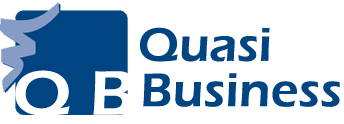In the dynamic landscape of Human Resources Management, the integration of technology has been a catalyst for efficiency and strategic decision-making. One such technological marvel making waves in the HR realm is the Human Resources Information System (HRIS) software. This article aims to provide a comprehensive exploration of HRIS software, elucidating its core features, benefits, and the transformative impact it has on the entire spectrum of HR management.
An effective performance management system is crucial for organizations striving to achieve their strategic objectives. This system not only helps in setting clear goals and expectations but also facilitates continuous feedback and development opportunities for employees. By aligning individual performance with the company’s overall mission, an effective performance management system ensures that employees are motivated and focused on contributing to the organization’s success. Moreover, it enables managers to identify and address performance issues promptly, fostering a culture of accountability and continuous improvement. This holistic approach to performance management ultimately leads to higher employee satisfaction and better organizational outcomes.
Overview of HRIS Software:
- Definition and Purpose: HRIS software in 2024 is a sophisticated technological solution designed to centralize and automate various HR functions. It acts as a hub for employee-related data, offering a unified platform that revolutionizes the way organizations handle their human resources. From recruitment and onboarding to performance management and payroll processing, HRIS software encompasses a wide array of functionalities.
- Evolution and Adoption: The evolution of HRIS software can be traced back to the need for more efficient HR processes. As businesses grew in scale and complexity, traditional manual methods of HR management became inadequate. HRIS software emerged as a response to this challenge, providing a streamlined and automated approach to managing workforce-related tasks.
Key Features of HRIS Software
- Centralized Employee Database: The cornerstone of HRIS software lies in its ability to serve as a centralized repository for all employee-related information. This includes not only basic personal details but also comprehensive employment histories, performance records, and other relevant data. This centralized approach eliminates redundancy, reduces errors, and ensures data consistency across the organization.
- Recruitment and Onboarding: HRIS software significantly streamlines the recruitment process by automating key tasks such as job posting, applicant tracking, and resume parsing. Furthermore, it facilitates a seamless onboarding experience for new hires. From necessary documentation to orientation materials, HRIS software guides employees through the onboarding journey, ensuring a smooth transition into the organization.
- Performance Management: Performance management is a critical aspect of employee development and organizational success. HRIS software empowers organizations to set performance goals, conduct evaluations, and track progress systematically. It provides tools for managers and employees to collaborate on performance reviews, fostering a continuous feedback loop that enhances individual and team performance.
- Time and Attendance Management: Tracking employee working hours, managing leave requests, and monitoring attendance are integral functions within HRIS software. Automation in time and attendance management not only ensures accurate payroll processing but also reduces manual errors. Additionally, it offers valuable insights into employee productivity and attendance trends.
Benefits of HRIS Software
- Efficiency Gains: The automation of routine HR tasks through HRIS software leads to significant efficiency gains. HR professionals can redirect their focus from manual data entry and administrative chores to more strategic initiatives that contribute to organizational growth and employee development.
- Data Accuracy and Compliance: The centralized nature of HRIS software ensures data accuracy and compliance with relevant regulations. By maintaining a single source of truth for employee data, organizations reduce the risk of errors associated with disparate data sources and enhance their ability to meet legal and regulatory requirements.
- Strategic Decision-Making: With real-time access to comprehensive HR data, organizational leaders can make informed and strategic decisions. HRIS software provides insights into workforce demographics, performance metrics, and other key indicators, enabling leaders to align HR strategies with overall business objectives.
- Employee Empowerment: HRIS software often includes self-service portals that empower employees to manage certain aspects of their employment, such as updating personal information, accessing pay stubs, and submitting leave requests. This not only enhances employee satisfaction but also reduces the administrative burden on HR staff.
Challenges and Considerations
- Implementation Challenges: While the benefits of HRIS software are substantial, organizations may face challenges during the implementation phase. These challenges can include resistance to change, data migration issues, and the need for comprehensive training programs.
- Data Security and Privacy: The centralized nature of HRIS software necessitates robust data security measures. Organizations must prioritize data privacy to safeguard sensitive employee information and comply with data protection regulations.
- Integration with Existing Systems: Seamless integration with existing systems, such as payroll and ERP software, is crucial for the success of HRIS implementation. Compatibility issues can hinder the efficiency gains promised by HRIS software.
Future Trends in HRIS Software
- Artificial Intelligence (AI) Integration: The integration of AI in HRIS software is expected to further enhance automation and decision-making capabilities. AI-powered features such as predictive analytics, chatbots for employee queries, and intelligent recruitment tools are becoming increasingly prevalent.
- Employee Experience Focus: Future HRIS software is likely to place a heightened emphasis on enhancing the overall employee experience. This includes features such as personalized dashboards, continuous feedback mechanisms, and tools for career development and training.
- Cloud-Based Solutions: The shift towards cloud-based HRIS solutions is accelerating. Cloud-based platforms offer scalability, accessibility, and cost-effectiveness, making them an attractive choice for organizations of all sizes.
Conclusion
In conclusion, HRIS software for your team stands as a testament to the transformative power of technology in reshaping HR management. From automating routine tasks to providing strategic insights, HRIS software has become an indispensable tool for organizations navigating the complexities of human resources in the modern business landscape. As the technology continues to evolve, organizations that harness the full potential of HRIS software are poised to unlock new levels of efficiency, compliance, and strategic workforce management.
















